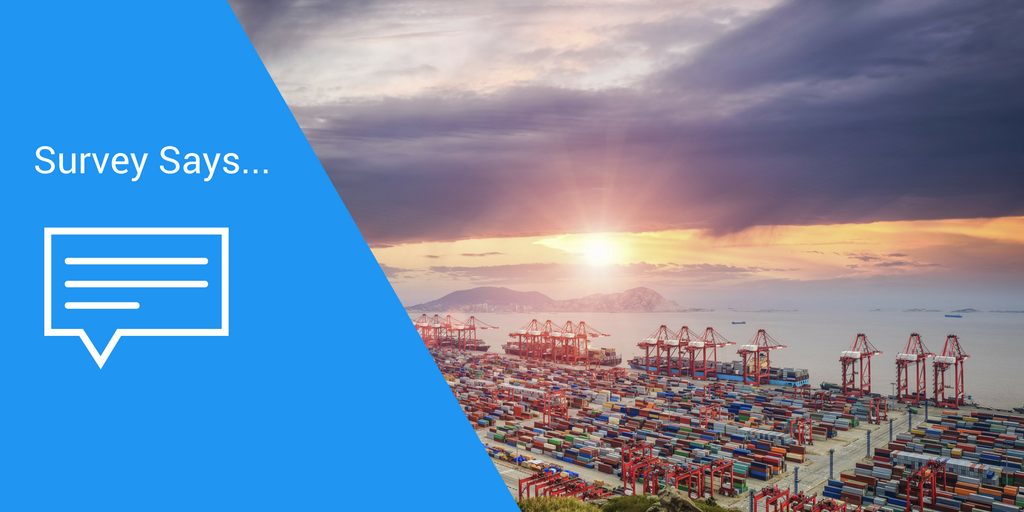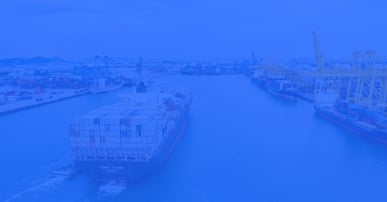For European shippers and freight forwarders, the end of the year marks the start of ocean freight contract negotiations. For US shippers, springtime usually marks the beginning of the annual contract negotiation with ocean carriers. However, things have gotten off track when capacity began to outpace the market and rates fell to historic lows. As a result, forwarders and shippers began to change their strategy. In the end, how can we be more efficient and evolve the age-old practice of "tendering/bidding"?
More Shippers Tendering Freight Monthly
In this week’s social media survey, we asked folks how frequently they negotiate (tender/bid) their freight. While there was no clear majority, 40% said they tender/bid freight on a monthly basis compared to 30% each for every quarter and annually.
The higher percentage rate for monthly bidding is not surprising considering the erratic rate market; but as Chas Deller, co-founder of forwarding firm, 10xOcean notes, “There are two golden rules – You only go to bid if you can reduce costs and improve service.”
@Xeneta_AS 2 Golden rules You only go to bid if you can reduce costs and improve service .
— 10XOCEANSOLUTIONS (@10xocean1) November 4, 2016
Long-term or Spot | Tug of War
In a recent podcast, we highlighted that based on current data, short-term contract average price for the East Asia-North Europe lane declined 24%; but, the market low price increased 11%. The gain in the market low price indicates that carriers have been successful in pulling up short-term rates during the quarter. If this trend continues, 2017 could usher in higher ocean freight rates with long-term rates also feeling the upward trend as carriers are rejecting long-term contracts at the previous historic lows from earlier in the year.
The industry remains cautiously optimistic of what the end of the year and 2017 can bring for rates. As we noted, the Hanjin effect has worn off, but in the end, the market is looking up.
In addition, a previous Twitter survey indicated that folks expect higher rates in 2017. Peter Tirschwell, Senior Director, Editorial Content for HIS Markit, Maritime Trade provided his thoughts on 2017 freight rates, “Slight increase but not as much as some shippers are expecting or as much as carriers would like.”
These leads then to a question about how useful are these periodic negotiations. Its a tug of war between BCOs and suppliers. Does anyone benefit in the end?
Are Negotiations Obsolete? Is Efficiency at Play?
A benefit of long-term contract negotiations is the simple efficiency of locking in rates so constant negotiation doesn't need to happen. While usually large volume shippers contract on longer freight contracts, the sheer unpredictability of the market earlier in the year has made spot market prices more attractive.
However, as I noted above, efficiency and transparency, is the order of the day. For many, negotiations can take anywhere from 60-90 days; a whole quarter is lost simply trying to see if maybe prices or service is better somewhere else. With such a broken industry with disparate practices and processes, it all becomes one big ball of chaos, confusion and fighting in the dark. Data is everywhere and nowhere. Rate sheet standards are non-existent. Trying to make sense of a BCO's, carriers' and freight forwarders' rate sheets is like deciphering code to make any sense of it and get them to speak the same language. In the end, th process doesn't come without any costs to shippers. Inefficiency is expensive.
Disturbance in the Force is Not Welcomed
Spending time collecting all the disparate data, making sense of it and then negotiating and allocating, causes a few new gray hairs to pop up. Not to mention that for many logistics and supply chain professionals, the most important thing is to make sure that the cargo, inventory flow is undisturbed; that they have less things to worry about and only focus on getting things from A to B to make sure overall company revenue trends upward.
What's important for logistics and supply chain professionals is that they change providers as little as possibly needed as it causes disruptions to their supply chain, which in the end is a big loss. There needs to be a better way to benchmark suppliers and keep abreast of the market on a constant basis to be aware of how the market moves and how changes in market dynamics can affect prices, service and in the end the flow of trade.
The market continues to shake out as losses mount and M&A activity continues. We will all be affected by the social economic issues amounting, which will affect supply and demand, which will affect carriers' financial health, and in turn affect freight rates and service. What's your overall thought on ocean freight negotiations? Here to stay or more to come? Tell us what you think, leave your comment below.
Check out how Electrolux used Xeneta during their ocean freight negotiations to get visbility into their prices. Download the report here.


-1.jpg)



